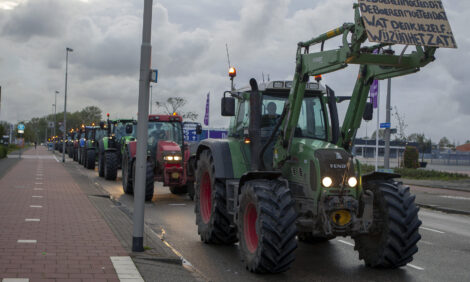



Prepare for Higher Forage Prices
US - On July 24, the National Drought Mitigation Center announced that 53 per cent of the United States was experiencing a moderate to exceptional drought. Drought conditions have severely reduced the supply of hay and other feedstuffs, escalating the demand and driving up prices.At the July 24 hay auction in Pipestone, Minnesota, supreme quality alfalfa hay brought a high of $260 per ton, while grass/alfalfa mixed hay brought a high of $200 per ton. Grass hay was slightly lower at $180 per ton.
To prepare for higher prices, livestock owners should consider these tips from University of Minnesota Extension:
- Keep in mind that quality forage should be the backbone of the livestock diet. For cattle producers, corn silage, alfalfa or grass haylage, and straw can be added to the diet; however, the drought has affected the supply and price of these feedstuffs as well.
- If purchasing drought-stressed forage (hay products or corn silage), the forage should be tested for nitrates. Nitrates can accumulate in stems and stalks of drought-stressed plants. Once livestock consume the forage, nitrates turn into nitrites, which bind to red blood cells, preventing the cells from carrying oxygen to tissues. Two cases of nitrate toxicity have recently been reported in Wisconsin cattle herds. On a positive note, drought-affected alfalfa usually has a higher leaf/stem ration, resulting in better quality.
- If possible, consider adding hay storage to reduce the effects of seasonal price fluctuations. Hay is usually more affordable when purchased during the growing season compared to the winter months.
- If purchasing hay, buy it early. Waiting for later cuttings (which are usually higher in quality) puts livestock owners at risks of limited late-season supplies and higher prices. Having a good working relationship with a hay supplier can help ensure a consistent and reliable source of hay products and/or corn silage.
- Plan in advance. Budget for the price increases in feedstuffs and re-evaluate how many livestock you can afford to feed. Unfortunately, increases in feedstuffs are not always balanced by higher prices for livestock products.
- Finally, try and keep the hay type (grass or alfalfa) or forage product consistent in the diet or ration. Constantly changing hay types can lead to health problems, especially with horses, and can affect production outcomes in cattle.
TheCattleSite News Desk


